Education
Universidad Nacional de Tucumán, Argentina,
Licenciatura en Letras (Linguistics and Literature)
Universidad de Buenos Aires, Argentina.
Post-Graduate Studies, Argentine Literature
Universidad Complutense de Madrid, Spain.
Doctoral Program, Ibero-American Literature
Consejo Superior de Investigaciones Científicas, OFINES, Madrid, Spain
Including: Cultural Semiotics, Theories of Cultural Studies, Urban Studies
Consejo Superior de Investigaciones Científicas.
University of California, Los Angeles, USA. Ph.D. (Hispanic Languages and Literatures)
Research
Latin American Cultural Studies
Nineteenth, Twentieth and Twentieth First Centuries Argentine Cultural Studies
Studies of the City, Gendered Spaces
Cultural, Sensuous and Affective Geographies.
Human Rights, Memory Studies, Transnational Memory,
Politics of Emotions.
Books
-
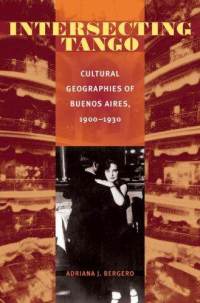
- Intersecting Tango
- Cultural Geographies of Buenos Aires, 1900-1930
- University of Pittsburgh Press, 2008
-
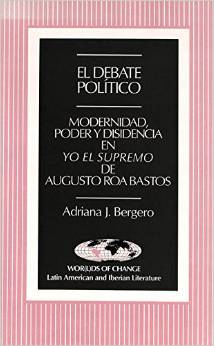
- El Debate Político: Modernidad, Poder y Disidencia en Yo el Supremo de Augusto Roa Bastos
- Peter Lang Publishing Inc. 1994,
-
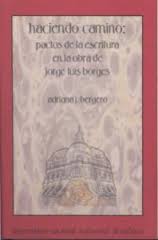
- Haciendo camino. Pactos de la escritura en la obra de Jorge Luis Borges
- Universidad Nacional Autónoma de México, 1999
-
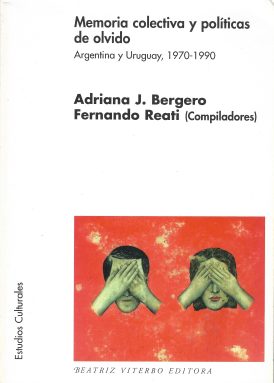
- Memorias Colectivas y Políticas de Olvido
- Argentina y Uruguay, 1970-1990
- Beatriz Viterbo Editor, Rosario, Argentina, 1997: 376 pages., February 1997
-
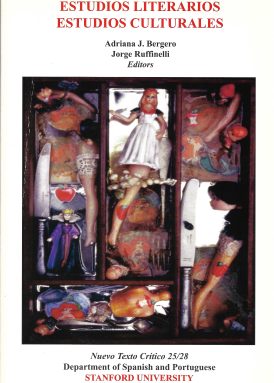
- Estudios Literarios – Estudios Culturales
- Nuevo Texto Crítico. Latin American Center, Stanford University.
- Nuevo Texto Crítico, 2002
-
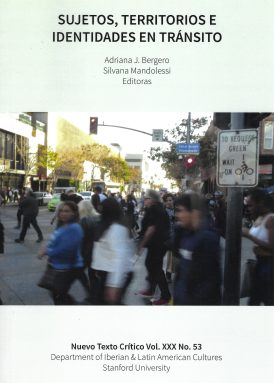
- Sujetos, Territorios y Culturas en Tránsito
- Giros transnacionales en la cultura hispánica contemporánea. Special Issue Nuevo Texto Crítico
- Stanford University Press; Stanford, 2019-09
Articles
RESEARCH ARTICLES AND CHAPTERS IN BOOKS
“Algunas consideraciones sobre el discurso alienado en textos de Federico García Lorca”. Mester, XV (1986): 9-
20.
https://escholarship.org/uc/item/291933d0
“Federico García Lorca: frases hechas y prejuicios en la delimitación del asfixiante espacio de la tragedia” in C.
Brian Morris (ed.), Cuando yo me muera: Essays on Federico García Lorca. Lanham, Maryland: University Press
of America, 1988: 295-322.
https://www.degruyter.com/database/rom/entry/rom.rom89_13327/html
“La descentralización textual en Polvo y ceniza de Eliecer Cárdenas” in Revista Iberoamericana, Pittsburg
University Press, 1998. 144-145: 932-958.
https://www.liverpooluniversitypress.co.uk/doi/epdf/10.5195/reviberoamer.1988.4497
“Science, Modern Art and Surrealism: The Representation of Imaginary Matter” in C. Brian Morris (ed.), The
Surrealist Adventure in Spain. 1991. Ottawa, Doverhouse Editions-Canada, University of Ottawa Series of
Hispanic Studies: 19-39.
“La araña en el jardín: algunas consideraciones sobre Doña Rosita la soltera” The Role of the Great Spanish
Dramatist Federico García Lorca in the 20th Century Literature and Humanities, Los Angeles: Publication of the
Bilingual Foundation of the Arts: 1991: 43-48.
“Materia, naturaleza y utopía en Industrias y andanzas de Alfanhuí” in Discurso literario. Revista de Estudios
Iberoamericanos, 1991. Vol. 9, Num.1: 7-32.
“De tesoros, mercados y prestidigitadores. Reflexiones sobre la representación de América Latina”. Mester, 1992. XXI 21.2: 147-169.
https://escholarship.org/uc/item/13h3748x
“Escritura, otredad y contradicción recuperada in ‘Borrador de un informe’ de Augusto Roa Bastos.” Hispamérica, Latin American Center, University of Maryland, 1993. XXII, number 66: 17-30.
https://www.jstor.org/stable/20539735
“Prólogo” to the Edition of Hijo de hombre by Augusto Roa Bastos. Madrid, 1993. Editorial Espasa-Calpe, Madrid, Spain 9-26.
“Guaraní-Spanish Glossary” to Hijo de hombre by Augusto Roa Bastos. Madrid, Espasa-Calpe,Madrid, Spain, 1993: 213-245.
“Estrategias fatales e Intrusos: Discurso posmoderno y memoria implosiva en la Argentina de la re-democratización.” In Memoria colectiva y políticas de olvido. Argentina y Uruguay (1970- 1990): 59-88. Co-edited by Adriana J. Bergero and Fernando Reati, Rosario, Argentina. Beatriz Viterbo Editora, 1996.
“Detrás de ‘disparates entretenidos’: actos no consumados, despidos e interrupciones en la narrativa de Felisberto Hernández en el Uruguay Battlista” in Nuevo Texto Crítico (Latin American Center, Stanford University) 1996. number 16/17 Vol. 3: 191-213.
“Desindustrialización, espacio global y gestión colectiva en Insomnio de Marcelo Cohen”. Hispamérica. Revista de Literatura, University of Maryland. 2002. XXXI, n. 93: 35-47.
https://www.jstor.org/stable/20540404
“Estudios literarios/Estudios culturales. Disciplinariedad y nuevas configuraciones epistémicas” in Adriana J. Bergero and Jorge Rufinelli (editors) Estudios Literarios/Estudios Culturales. Nuevo Texto Crítico, Latin American Center, Stanford University. 2002. XIII-XIV, number 25/28: 5-22.
https://muse.jhu.edu/article/494706/summary
“Jorge Luis Borges/Buenos Aires: arrabales, fobias y dioramas de sublimación en la primera industrialización de Buenos Aires”. In Cristina Pons and Claudia Soria (editors) (2005). Delirios de grandeza. Los mitos argentinos: memoria, identidad, cultura. Beatriz Viterbo Editora, Rosario, Argentina: 309-330.
“Los cuerpos del trabajo, el trabajo de los cuerpos. Carolina Muzilli: archivos en disputa”. In Mabel Moraña and María Rosa Olivera-Williams (editors). El salto de Minerva. Intelectuales, género y Estado en América Latina. Madrid-Frankfurt am Main, Iberoamericana –Vervuet: 2005: 101-121.
“Escritura, vida cotidiana y resignificaciones en La Habana de Juan Francisco Manzano” in Afro-Hispanic Review, Vanderbilt University, Vol. 24, number 2, Fall 2005: 7-32.
https://www.jstor.org/stable/23054571
“Sheltering Homes, Houses of Horror. Human Rights, Neo-liberalism and Latin American Trans-comunitarian Models.”, Chapter XI. Fernando García Selgas and Raymond Roco (eds.) Transnationalism: Issues and Perspectives. Editorial de la Universidad Complutense de Madrid E-books (www.editorialComplutense.com), 2006: 225-257.
“Modernidad, genocidio, liminalidad y latencia en la Frontera Sur. Reescrituras borgeanas de la erradicación”, in Alfonso del Toro and René Ceballos (eds.) Expresiones liminales en la narrativa latinoamericana del siglo XX. Estrategias posmodernas y postcoloniales. Hildesheim, Zurich, New York, George Olms Verlag: 2007: 251-277.
“Charlatanes, cursis y enamorados. Espacios de la lucha simbólica, dramaticidad y melodrama en la conversión cultural de la Modernidad: ‘Tan pequeños nos sentimos y tan incapaces de ser insensibles.’” in Alfonso del Toro, Cornelia Sieber, Alfonso de Toro, Claudia Gronemann and René Ceballos (editors) Hybriditätsdiskurse in Lateinamerika. Von der Eroberung bis aum 21. Jarhrhundert/ Discursos sobre la hibridez en Latinoamérica: del descubrimiento hasta el siglo XXI, Institut für Romanistik, Universität Leipzig. Peter Lang Internationaler Verlag der Wissenschaften, Frankfurt, 2007: 157-190.
“Feminist Insurrection: From Queiros and Castellanos to Morejón, Poniatowska, Valenzuela and Eltit”, co-authored with Elizabeth Marchant. Translated by Todd Garth. In Sara Castro-Klaren (editor) A Companion to Latin American Literature and Culture, Oxford, Blackwell Publishing, 2008: 509-530.
“Literature Between Wars: Macedonio Fernández, Jorge Luis Borges and Felisberto Hernández”. Translated by Todd Garth. In Sara Castro-Kláren (editor) A Companion to Latin American Literature and Culture, 2008, Oxford, Backwell Publishing: 442-460.
“Interrumpiendo la seducción femenina (Lo que ocultan las bellas). Lo gótico espectral y el gótico misógino en Julián del Casal,” Anales Nueva Epoca, Departamento de Estudios Globales. Göteborgs University, Sweden. 2008. Number 11: 195-215.
“Cautivos mudos y cautivos que hablan: la segunda vida de Santiago Avendaño”, Hispamérica, Latin American Studies Center, University of Maryland, 2009, Number 111: 31-44.
“Espectros, escalofríos y discursividad herida en El espinazo del Diablo. El gótico como cuerpo-geografía cognitiva-emocional de quiebre (No todos los espectros permanencen abandonados). Modern Languages Notes. Hispanic Issue. The Johns Hopkins University Press, 2010: 433-546.
“Front-Stage / Back-stage: segundas vidas en la dimensión social del espacio de la ciudad neoliberal: Oido Absoluto/Buenos Aires Viceversa, Amerika. Mémoires, Identités, Territoires (Laboratoire Interdisciplinaire de Rechérces sur les Amériques,) Special Issue: “Villes américaines du XXIéme siècle: réalités et represéntations sociales, culturelles et linguistique.”. Université Rennes, France. Amerika [En ligne], 9 | 2013, mis en ligne le 20 décembre 2013, consulté le 08 septembre 2014. URL: http://amerika.revues.org/4440; DOI. 10.4000/amerika.4440. http://amerika.revues.org.
“The Spanish Past in Transnational Films: The ‘Otherlands’ of Memory,” edited by Nadia Lie -TRANSIT. Special Issue: “Transnational Memory Studies”, in European Review, Cambridge University Press, 2014: 632 -641.
“Estructuras Emocionales, Derechos Humanos y Archivistas de la Memoria en El secreto de sus ojos. Benjamín y la espera en solitario de Ricardo Morales.” Modern Language Notes, Johns Hopkins University Press. Volume 130/number 2, March 2015: 340-361.
“El trabajo de las emociones, memoria y piel como frontera en geografías emocionales de films hispanohablantes” in Donde no habite el olvido: Derechos Humanos, Herencia y transmisión del testimonio en Argentina. Edited by Emilia Parassi, Laura Scarabelli and Ana María González Luna. Publication of the Dipartimento di Lingue e Letteratura Strainiero, UNIMI (Universita degli Studi di Milano) Dipartimento di Scienze della Mediaziones Linguistica e di Studi Interculturali), 2018.: 113-127. https://riviste.unimi.it/index.php/disegni .
“Sujetos, territorios y culturas en tránsito. Dimensiones de lo transnacional en la cultura hispánica contemporánea.” Adriana J. Bergero and Silvana Mandolessi (editors). Nuevo Texto Crítico. Latin American Center, Stanford University. 2019, Vol. XXX.
“Introducción. El espacio social transnacional: Encrucijadas de campos teóricos en los Estudios Transnacionales.” In Adriana J. Bergero and Silvana Mandolessi (editors). Sujetos, territorios y culturas en tránsito. Dimensiones de lo transnacional en la cultura hispánica contemporánea. Nuevo Texto Crítico. Vol. XXX, number 53. Latin American Center, Stanford University. 2020: 7-50.
“La cercanía solidaria de los afectos”. Introduction to the Photographic Album Música para el Alma. Fotografías de Agustín Benencia Creative Commons International. Atribución-NoComercial-Compartirlgual, Sept. 2020. Please see the PDF of the complete Album [PDF Música-para-el-Alma, included]
LINKS:
https://www.youtube.com/watch?v=9sKsuZlRu0c
https://www.youtube.com/watch?v=EYzaWJpJVfw
NGO Música para el Alma / Teatro Colón, Buenos Aires, Argentina. A NGO with a total of 2,500 professional musicians accompanied by opera singers, clown nurses, and doctors, comedians (nurses and doctors), children choir groups, ballet dancers, volunteers, etc.
Dissertation
BOOK REVIEWS
“Jorge Luis Borges: A Study of the Short Fiction by Naomi Lindstrom” Hispanic Review, University of
Pennsylvania Press, Vol. 61, Number 1 (1993). 131-133.
https://www.jstor.org/stable/473312
“Augusto Roa Bastos’s I the Supreme: Dialogical Perspective by Helene Carol Weldt-Basson” Hispamérica .
Latin American Center, University of Maryland, 1995. Año XXIV, number 70. 1995.
https://www.jstor.org/stable/20539843?seq=1
“Laura Martins, En primer plano. Cine y Literatura en Argentina (1955-1969) “. Revista Iberoamericana,
Pittsburg University Press, LXVIII, number 201, October-November 2002: 1153-1157.
“Jean Franco, The Decline and Fall of the Lettered City” in Modern Language Notes, The Johns Hopkins
University Press, March 2006, Volume 121, number 2; 472-478.
https://www.proquest.com/docview/223314481/fulltextPDF/46CC8AE0FD364E5EPQ/1?accountid=14512
“Laura Podalsky: Specular City: Transforming Culture, Consumption, and Space in Buenos Aires, 1955-
1973”. Hispanic American Historical Review, Duke University Press, August 2009 issue, volume 89,
number 3.
https://doi.org/10.1215/00182168-2009-028
María Inés Lagos, Hechura y confección. Escritura y Subjetividad en narraciones de mujeres
latinoamericanas. Revista Hispánica Moderna (Columbia University Press), June 2011,
vol. 64, number 1.
https://www.jstor.org/stable/41306065?seq=1
Guillermo Anad: Tango, Transmodernidad y desencuentro, Revista Iberoamericana, University of
Pittsburg Press. “Narrativas de la derrota y del fracaso: Zurita/Gelman.” LXXX, Núm. 247, Abril- Junio
2014, ISSN 0034-9631.
https://www.liverpooluniversitypress.co.uk/doi/10.5195/reviberoamer.2014.7176
“Vikki Bell, The Art of Post-Dictatorship. Ethics and Aesthetics in Transitional Argentina. Serie Transitional Justice, Routledge, 2014. Cincinnati Romance Review, University of Cincinnati Press (2018).
https://scholar.uc.edu/concern/articles/rn301259n?locale=en
”Marlyng G. Miller: Tango Lessons”, Revista de Estudios Hispánicos. Duke University Press (2018).
https://library.oapen.org/bitstream/handle/20.500.12657/30257/648160.pdf?sequence=1&isAllowed=y
Courses
Spanish 120 C: Hispanic Literature since 1898
Trans-Atlantic Studies, Peninsular and Spanish American Literature and Culture
This course highlights the major sociological and cultural movements of Spain and Latin America. It analyzes modernity and social modernization: the Generación del 98’s approach to industrialization and urban culture (Azorín, Unamuno, Machado); the 2nd Spanish Republic and the democratization of the public sphere and culture (García Lorca); the rise of middle-class and populist governments in Latin America that brought forth cultural models for the recovery of difference and cultural heterogeneity (negritud, lo real maravilloso, realismo mágico, testimonios). It also studies the culture and imaginaries associated with the attempts to slow down or stop the newly mobilized sectors by the political right-wing in Spain, as well as cultural resistance to Francoist economics and culture—Miguel Delibes, Gloria Fuertes. It also examines the transitional processes that brought Spain into the European Union and Latin America from dictatorships to the formation of neoliberal democracies, the debates on human rights, and the representation of critical views (Luisa Valenzuela, Pedro Almodóvar, Guillermo del Toro, Gastón Biraben).
Spanish 191 B: Variable Topics
Studies in Hispanic Culture and Civilization
This course takes an interdisciplinary approach to the studies of the city, identifying major urban typologies to trace the historical, sociological, and cultural evolution of relevant Latin American cities and their representations in literature, film, journalism, and photography. Examples of the pre-Columbian, colonial, modern, massive, and global cities are examined through their historical agents, the spatialization of the social within the city’s spaces, gendered spaces/gendered architecture, the public and the private. Collective spaces are studied within the intersective nature of urban space. Some of the texts (and cities) analyzed in class are the following: Pre-colonial cities: Tenochtitlán, Hernán Cortés: “Carta Segunda de Relación”; Colonial cities: Lima: Simón de Ayanque (Esteban de Terralla Landa): Lima por dentro y por fuera; the mercantilist culture and urban spaces: Havana: Juan Francisco Manzano: Autobiografía de un esclavo and Cirilo Villaverde: Cecilia Valdés. Modern cities – Buenos Aires: Jorge Luis Borges: Fervor de Buenos Aires, Luna de enfrente, Evaristo Carriego: El alma del suburbio/La canción del barrio, Roberto Arlt: Las aguafuertes porteñas. Massive cities: Carlos Fuentes: La región más transparente, Elena Poniatowska: Luz y luna, las lunitas, Luis Rafael Sánchez: La guaracha del Macho Camacho; Neoliberal cities: Roberto Vallarino/Jaime Valverde and Juan Domingo Argüelles: El fin de la nostalgia: Nueva Crónica de la Ciudad de México, Alejandro González Iñárritu: Amores Perros or Marco Bechis: Garage Olimpo; David Riker: La ciudad/The City; Víctor Gaviria: La vendedora de rosas; Diego Casaravilla: Los laberintos de la exclusión. Relatos de inmigrantes ilegales en la Argentina.
Spanish 191 A/197: Special Topics
Borges/Buenos Aires
Jorge Luis Borges’s short stories, poems, and essays are read in the context of the effects of the first stage of Argentine industrial culture and the models of exemplary masculinity reinforced as the strongest identity of Modernity, the bacán (a bourgeois male model enriched by the power of money, political power, and sexual assertiveness). Using an interdisciplinary approach that combines architecture and urban/social reforms, literature, journalism, photography, and commercial advertising, the course studies how Borges’s characters and speakers comment on transitional Buenos Aires – and its elusive women – from the margins of modernity. Texts such as “Un Patio,” “Sala vacía,” “Llaneza,” “Cercanías,” “Las Calles” (Fervor de Buenos Aires), “Jactancia de Quietud” (Luna de Enfrente), “Hombre la Esquina Rosada,” “Milonga de Jacinto Chiclana,” “Dónde se habrán ido? (Milonga de Don Nicanor Paredes),” “Buenos Aires” (Elogio de la Sombra), “La Señora Mayor,” “La Intrusa” (El Informe de Brodie), “Emma Zunz,” “El Aleph,” “El Zahir” (El Aleph), “Buenos Aires,” “Buenos Aires (El otro, el mismo),” “El amenazado” (El oro de los tigres), “Elegía” (El otro, el mismo), among others, will be analyzed. Cultural geographers, urban and cultural studies theoreticians such as Sennett, Scobie, Romero, Gorelick, Guy, Sebrelli, Ulla, Siebel, and Armuz will be studied.
Spanish 240: Major Currents in Modern Spanish-American Literature
Modernism and Naturalism
This course examines the social imaginaries triggered by the artistic consortium of Modernism/Art Nouveau/Art Decó, a syncretic aesthetic that responded to the violent and unprecedented socio-cultural transformations brought about by Modernity and Modernization. Spanish 240 examines Latin American modernist and naturalist texts from an interdisciplinary approach (cultural studies, gender studies, cultural geography, sensuous geography, and social history). The course analyzes texts from high and popular culture (folletines and melodrama), interior design, fashion discourse, painting, architectural/urban planning and manifestos, urban chronicles, journalistic discourse, commercial advertising, and popular music (tango). The reading list includes texts by Martí, Darío, del Casal, Lugones, Gutiérrez Nájera, Herrera y Reissig, Gómez Carillo, Agustini, Storni, Gálvez, Pérez Leirós, A. de Carlo, Discépolo, Le Pera, Contursi, and Manzi. Films such as Modern Times (Charles Chaplin), Metropolis (Fritz Lang), The Blue Angel (Josef von Sternberg), The Devil is a Woman (Travis Banton), and Los Muchachos de Antes no Usaban Gomina (Manuel Romero) and theoreticians such as Baudelaire, Simmel, Bataille, Benjamin, Leach, Rama, Perus, Showalter, Boulen, Monteros, Ramos, and Salessi are analyzed in this class, as well as paintings by pre-Raphaelites such as Burne-Jones, Leighton, Rossetti, and Waterhouse and works by fashion and perfume designers such as Chanel and Schiaparelli.
Spanish 244 A/B
Contemporary Spanish-American Novel
This course focuses on Spanish-American contemporary literature and film concerning mass culture and melodrama (Boquitas Pintadas/El Beso de la Mujer Araña); women’s writing and the canon (Cola de Lagartija, Me Llamo Rigoberta Menchú); literature, tourism, the cultural marketplace, and culture of consumerism (Afrodita or Demasiado amor); collective memory, human rights, and the politics of oblivion (Estrella Distante or Garage Olimpo, El Espinazo del Diablo); social and economic marginalization in neoliberal politics and culture (Los Vigilantes, Mano de Obra); re-democratization, deregulated States, and violence (La Virgen de los Sicarios); the clonification of local spaces (Buenos Aires, Viceversa); migration and displacement (Bolivia); masculinity and femininity redefined (El Lado Oscuro del Corazón, Danzón) among other debates undertaken by Latin American fictional and cinematic works such as El Entenado and Salón de Belleza. Spanish 244 B examines texts that respond to the Boom’s and Post-Boom’s literary (mythologizing) portrayal of Latin America as a cornucopia of endless magic and utopian overcoming.
Spanish 280 A & B
Argentine Literature, Film, and Culture
This two-quarter seminar examines the evolution of the imaginaries forged on the topic of Argentine internal national borders throughout the nineteenth, twentieth, and twenty-first centuries. Over the course of two quarters, we cover a wide array of artistic and cultural productions (literature, film, photography, painting, legal discourse, medical and political discourses, newsreels, and journalism, movements of civil society) bearing on how in Argentine culture different configurations of the concept of pure nationality have been paradoxically defined from the borders—in other words, from the most external marginal zones of the Nation. Part I studies the post-revolutionary period, Rivadavia’s Buenos Aires as the emblematic “lettered city” (1810-33); the Buenos Aires of Don Juan Manuel de Rosas (1833-1852); the Conquest of the Desert (1878-9) and the configurations and reconfigurations of the public and private spaces implemented by the Conservative Order (1880-1916) and the two Radicalista governments (Irigoyen, Alvear, 1916-1930) and Uriburu’s coup d’état. Part II is dedicated to the study of the spectacular city of the Peronist movement (1945-1955) and the emergence of the massive city; the redefinition of the social use of public and private space in post-Revolución Libertadora (1955) and the transformation of the quotidien after Onganía’s and Videla’s coup d’états (1966-1970, 1976-1983); the re-democratization process (1983-2001), the failures and achievements of the “Memory, Truth and Justice,” the importance of Human Rights activism as well as the cultural responses to the 2001 crisis.
Spanish 280 / 290: Special Topics
Politics of the Family: Space, Nation, Gender and Households in Argentine Culture
Starting with the unusual family model forged by the former captive Santiago Avendaño in the early nineteenth century to the unparalleled and groundbreaking models of socialization depicted in La Dignidad de los Nadies (Fernando Pino Solana, 2005), the course examines major representations of the family in national imaginaries within critical turning points of the Argentine history: models of social interaction inside and outside the household, ethnic, gendered and socio-economic borders; institutional rituals, configurations of the public and private spheres; family, state policies, the Law, and religion. Family representations are a product of a particular moment in history and a particular structure of society. The seminar examines how this crucial matrix of social reproduction is constantly disarranged by organic configurations of the family that fail to comply with conventional structures, thus questioning “institutional” family models while interrupting the ceremonial plays of natural/trans-historic configurations. The list of texts also includes literary, cinematic, and pictorial texts from the Argentine popular theater (sainetes), and works by Avendaño, Mármol, Echeverría, Mansilla, Cambaceres, Borges, Arlt, Castelnuovo, Guido-Torre Nilson, Antonio Berni, Cortázar, Aira, Martel, and Paolinelli.
